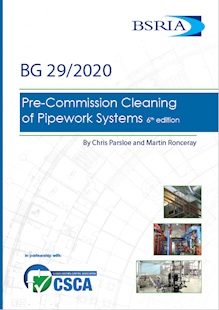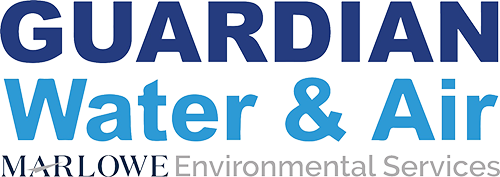Guardian Water Treatment Welcomes BG 29/2020: Precomissioning Cleaning of Pipework Systems

Guardian Water Treatment welcomes the latest addition of BSRIA’s guide to Precomissioning Cleaning of Pipework Systems – BG 29/2020. The sixth version of this important document was published on 30th April. It includes a range of new guidance in order to reflect changes in industry best practice since the last edition. Most notably for Guardian is its emphasis on the detection of oxygen and how this can prevent corrosive issues.
“The industry has moved on a pace over the last eight years,” said Steven Booth, MD for Guardian Water Treatment. “While we’ve always understood the effect of oxygen, developments in technology mean that its presence can now be accurately identified.”
Dissolved Oxygen and its causes are mentioned throughout BG 29/2020. This includes pressurisation issues through to specific information surrounding thin walled carbon steel. This is a product that can be particularly susceptible to corrosion.
Corrosion monitoring technology
The big change is that DO, along with other condition parameters, such as pH, conductivity, temperature, inhibitor levels and the afore mentioned pressure, can now be accurately detected using corrosion monitoring technology; real-time, data driven solutions, which complement and in some cases reduce or replace the need for sampling.
In section 2.3.8 the guide states:
“Specialist corrosion monitoring equipment is available to measure and record specific corrosion influencing parameters. As a permanent feature of the system, the data recorded can give the maintenance team early warning of conditions likely to promote internal corrosion. This technology allows remote diagnostics so that site visits are minimised.”
Remote monitoring
The last sentence has grown in importance since the COVID 19 crisis. Minimising site visits is a matter of social distancing now, not just a reduction in wasted time and money.
“This is something we have been championing since 2017,” said Steven. “For our clients, remote monitoring saves time and money by preventing issues before corrosion takes hold. The system we use, Hevasure, notifies clients of changes in system condition, including all-important dissolved oxygen, which is the precursor to almost all corrosive conditions, therefore stopping problems before they occur. Compared with sampling it is far more accurate and instantaneous.
“All of the changes reflect how the industry has moved on and we are pleased that some areas now include more detailed advice,” Steven added. “Section 4.5, for example, focuses on how internal pipework conditions and the consequent water quality can deteriorate rapidly if systems are not properly managed during the period up to practical completion.
“Routine checks, such as operating pressures and fill water volumes are key to ensuring condition, good circulation must be maintained to prevent bacterial proliferation and crucially, system drain downs should be avoided where possible.”
“Other technologies, such as in-line filtration, are also mentioned. A great contributor to reducing water wastage without disrupting water quality.
Precommissioning cleaning best practice
“We wholeheartedly support the updates to BG 29/2020. It now better reflects today’s precommissioning cleaning best practice and will help water systems be cleaner, more efficient and less likely to corrode and breakdown,” concluded Steven.
Guardian Water Treatment is a sponsor of the BG29/2020 guide and a certified partner of Hevasure, which has developed an industry leading 24/7 remote monitoring system for closed circuit water systems.
For more information about Guardian’s precommissioning cleaning services, click here.

